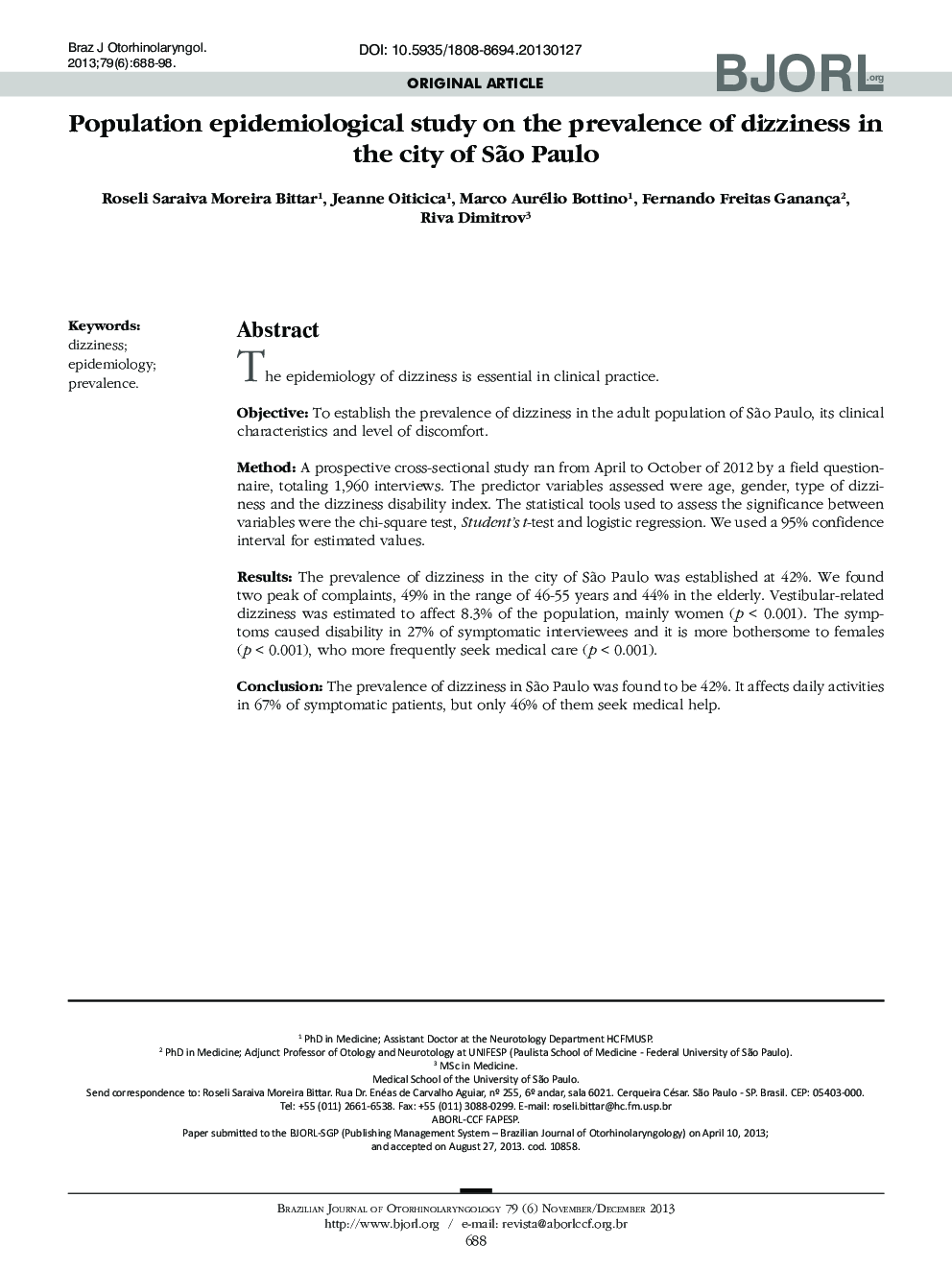| Article ID | Journal | Published Year | Pages | File Type |
|---|---|---|---|---|
| 4106499 | Brazilian Journal of Otorhinolaryngology | 2013 | 11 Pages |
The epidemiology of dizziness is essential in clinical practice.ObjectiveTo establish the prevalence of dizziness in the adult population of São Paulo, its clinical characteristics and level of discomfort.MethodA prospective cross-sectional study ran from April to October of 2012 by a field questionnaire, totaling 1,960 interviews. The predictor variables assessed were age, gender, type of dizziness and the dizziness disability index. The statistical tools used to assess the significance between variables were the chi-square test, Student's t-test and logistic regression. We used a 95% confidence interval for estimated values.ResultsThe prevalence of dizziness in the city of São Paulo was established at 42%. We found two peak of complaints, 49% in the range of 46–55 years and 44% in the elderly. Vestibular-related dizziness was estimated to affect 8.3% of the population, mainly women (p < 0.001). The symptoms caused disability in 27% of symptomatic interviewees and it is more bothersome to females (p < 0.001), who more frequently seek medical care (p < 0.001).ConclusionThe prevalence of dizziness in São Paulo was found to be 42%. It affects daily activities in 67% of symptomatic patients, but only 46% of them seek medical help.
